First Quarter: Young thoughts on fiber arts
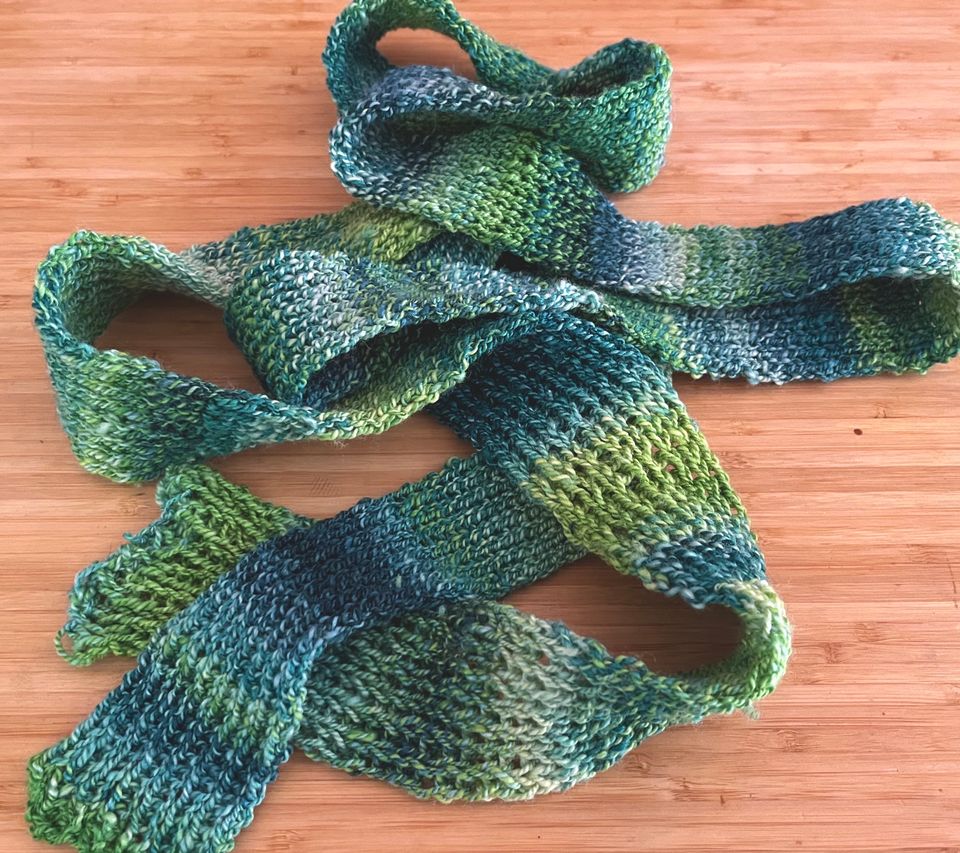
Hello. It's Friday, and as I send these thoughts to you I'm anxiously looking forward to next Friday, when I expect to buy some more yarn — because I'm out, and I want to start another knitting project.
Up until roughly the start of this calendar year, I would have been very surprised to say those words. I spent my childhood and early adulthood utterly, almost vehemently, disinterested in knitting, sewing, embroidery, or any other fiber art I can think of. This was one focus of my original gender rebellions; I was under no familial or social pressure to learn fiber arts, but while I embraced some stereotypically feminine activities, I hated the idea of adopting a fiber art because I'd read so many fantasy stories where a female protagonist was forced to knit, sew, etc., and it was hard for me to understand such activities as anything other than historical agents of patriarchal control. Keep women's hands busy so they can't take up swords, and so forth. It felt like a poisoned well — not to mention that my fashion sense didn't long resonate with the twee flower prints and delicate pastel tones that (in my memory at least) dominated local fabric stores. As I grew older and learned about all the horrific accidents that befell steam-powered loom operators after the Industrial Revolution, I also associated fiber arts with the oppressive garment industry.
I only tried my hand at a few fiber projects before these last few months. I was not immune to a mid-90s resurgence of weaving friendship bracelets, which I think I used as a way to earn a Girl Scouts badge. In eighth grade, everyone in my school system had to take home economics, with a sewing portion involved; but I didn't want to follow the patterns offered for sewing stuffed animals, and I was outright afraid of the actual sewing machine, so I stubbornly earned that credit by hand-stitching a very nice but simple poncho. And in the second half of college, my abuser was a dedicated knitter, and I wound up learning the most fundamental knit stitch from her, but once I was free of her I resolved to have nothing to do with knitting ever again, along with many other things she'd tainted — especially given how the abuse I'd experienced was so corrective about my gender development.
But for all that, here I am, a fledgling knitter myself. And there are at least a few other fiber arts I'd still like to learn. I've been using this First Quarter cycle to try and properly take stock of how my life came to this.
The works of a grandmother's hands
My mother's mother was my mam-gu. That's the southern Welsh term, hyphenation intentional; the northern Welsh dialect has the more elegant nain, but the Cymric side of my family is rooted across Monmouthshire, Carmarthenshire, and Ceredigion, at least in any recent memory.
In those parts of the country, English has long been the predominant language by a higher degree than in the north. Whether we look at Welsh speakers in decline or in revitalization, southern Cymru is generally the more anglicized place — despite southern Welsh pronunciation and vocabulary being the most "official" form of Welsh, or being seen by some people (not me, really) as the most "beautiful." All that is to say my mam-gu grew up virtually destined to only speak English, and she did. But despite her culturally anglophone upbringing, despite lacking most second language acquisition skills, she never ceased stubbornly trying to become a Welsh speaker until the point when she developed dementia. She was fiercely proud of Cymric identity; though enamoured of the English crown and likewise possessed of a certain WWII-surviving "all us Brits were bombed together" attitude, she refused to be assimilated into an essentially-English, Union Jack-waving, imperial homogeneity. On the one hand she dated an Englishman for most of her post-divorced life and also felt a huge affinity for Scotland, but on the other hand her heart was in Cymru itself, and I think — though she wouldn't have said it this way — she was sensitive to Cymric culture being colonized any more than it already had been.
Needless to say, living in the United States especially didn't suit her, but she put up with it even after her husband (my tad-cu) walked out on her. Her three children here had nearly grown to adulthood, and eventually her grandchildren existed here. She returned to her homeland occasionally, just not as much as she would have liked. Between her sense of displacement and whatever chemical + cultivated anxiety/depression package has certainly filtered down that branch of my family for generations, she wasn't a happy person, which was taken out emotionally on her offspring. But there was one thing that I will always consider her greatest strength, her consolation to herself: her hands, and more specifically what she could do with them.
She was ambidextrous, and it basically seemed like she could make her hands do anything. Despite having a very short build like me, or being raised within fairly traditional gender roles, she took her upbringing's "handle shit yourself" ethic to heart, for better or worse, and stayed extremely handy around her own house for most of her life.[1] She also wasn't supremely athletic, but when it came to any sport requiring good hand-eye coordination — such as golf, lawn bowling, indoor bowling, and badminton — she was an excellent amateur. And above all, there were her hand crafts.
I couldn't even begin to comprehensively list every craft she knew. In the course of my childhood and teen years I remember seeing her knit, crochet, sew, and embroider, and for everything I didn't witness directly there were all the other things where I viewed the finished product: lacework, quilting, felting, basket-weaving, quilling and other paper arts. She wasn't a traditional visual artist, but she was still a calligrapher. She built dollhouses complete with furniture, and she carved traditional love spoons. If it turned out that she did spinning, weaving, or dyeing, that wouldn't surprise me, and neither would if she'd also tried pottery or glasswork (although I don't think she had the right heat sources). Many things she made were decorative, or toys like stuffed animals, but just as many things had a practical function.
The only thing my mam-gu couldn't really do with her hands was cook, and even that wasn't a failing of her hands so much as one of her tongue. Imagine the stereotypes about British palates and my mother could confirm that for you with what she had to eat growing up. As indicated already, their relationship was not a healthy one. From everything I've been led to understand, my mam-gu was a very projecting, vicarious parent; she inundated her daughters with things that she thought they should learn to do for the sake of preserving Cymric culture, like singing or playing the harp. The unrealistic expectations heaped on my mother never quite turned her away from her own Cymric pride — she still has it in spades — but I think she learned what not to do when instilling the same sense in me.
My mother also never absorbed all my mam-gu's crafts, but she still sewed and enjoyed it. This was vital for all the things that my unusual build needed hemmed in my childhood. It also meant I had some of the best Halloween costumes in the neighborhood. And thus, despite how I thought I shouldn't ever take up any kind of fiber art, I spent my whole upbringing influenced by the gifts of my maternal lineage's relationship to fiber. Was I ungrateful? I don't try to assess things from that perspective now, but I might still say I wasn't thinking through my fiber arts aversion very far.
Like it or not, the most immediate, personal associations I have with various fiber arts belong to memories of my mam-gu. And because of her unbridled passion for Cymru — not "America," not "Britain," Cymru — I also indelibly connect fiber arts with my unhomogenized ancestry.
It makes all too much sense, I suppose. For besides my personal situation, what are thread, yarn, and cord if not some of the very oldest and most universal symbols of both history and fate — of links between the dead and the living and the unborn — of networks of community — and of narrative?
Fiber & text
In English, the word text shares exactly the same Latin stem as the words textile and texture. The stem is tex- or text-, referring to weaving, plaiting, interlacing. And we do not talk about text because of what written materials are made out of; there's very little weaving involved. Text is a metaphor. The words themselves are a flat pattern of stitches cascading down the page. Writing by hand is like extending links in a scarf.
If this correspondence is not a linguistic constant across other cultures, it's also no accident, because one thing that is a constant is textile production pre-dating the written word. Besides fire, fabrics might be the oldest things humans have ever made for ourselves with our hands. And with fire and fabric come stories: in winter, over long nights, in other idle times where the one thing to do is to stay warm and not go mad from boredom, for tens of thousands of years we've sat around fires and occupied our hands by making things to keep ourselves even warmer, and we've occupied our mouths by telling tales. Great esteem once went to the best weavers and knitters; great esteem once went to the best storytellers; and perhaps sometimes they would be the same people.
Textiles themselves tells stories and takes the measure of things. There have been tapestries like that of Bayeux; there have been indigenous Andean quipu cords. The latter demonstrates the measuring principle, the imposition of narrative into something not even fictional but empirical. We originally recorded things just to record them, without differentiating gradations of truth. Some of the oldest actual writing systems were probably invented for accounting purposes, going by the samples that have been left behind; but the written symbols rapidly incorporated mythology. Many of the first preserved samples of an old language are written lineages of kings, who were real, but only to a point where suddenly their ancestors are gods or (presumed) imaginary heroes.
In less-modernized cultures where extended families and reverence for elders are the norm, who is often positioned as the great storyteller? The grandmother. Who is also the keeper and teacher of fiber arts? The grandmother. These things are not inherently women's work, for nothing is, but we nonetheless stand today atop thousands of generations of entrenched gender expectations for women as fabricators, creators of something from nothing, before anyone even factors in projections of "female anatomy." The motif of three personified fates spinning or weaving people's destinies may vary in whether all the women are old, but they are certainly women.
Of course as "women's work" is perpetually devalued, we see the state of affairs today, a mirroring and amplification of devaluations throughout the past. Women's tongues are nimble but this also makes them liars. The last thing they should be allowed is literacy. And anyway, telling stories is not a proper career. Writers do not need to be paid. A computer program can do it now. Fiber arts are not arts; no craft is an art; a craft is a silly, sparkly, froufy thing that children make. Women can pick up needles and wheels and looms as a hobby, but they shouldn't expect to make a living off of it, and if they're too serious about it then they might become crazy cat ladies instead of integrated members of society. I don't believe these things, but others do.
In writing this very post I was shocked to discover that fiber arts as I use the term is not how many people use it; fiber arts can refer to the rare textile objects produced in a context that culture curators choose to enshrine in museums. Things which are not meant to be used, but displayed. Textile arts are the useable things, which in these thinkers' eyes makes them not art at all. But having learned this, I'm not going to distinguish between one thing or the other. Anything made with fiber can be art. Anything with a practical function can be art. The line between art and craft doesn't exist to me. My mam-gu did both.
Fiber & the future
In "the digital age," so-called, we are ruptured from much of our origins — our pasts, our ancestral land-ties — but while sometimes this is through technology, it's even more often through socioeconomic forces, or how those forces wield tech. In many ways, everything old is still new.
As textile production was automated through factories in the Industrial Revolution, this led to the earliest programming formats, such as through the punch-card operated Jacquard loom, which helped inspire the Analytical Engine proposed by Charles Babbage and advanced conceptually by people like Ada Lovelace. Lovelace, sometimes nicknamed "the first programmer," was a woman in an academic field dominated by men; yet concrete, arithmetic operations in her time through the early 20th century were also "women's work" as they were considered menial, repetitive labor equated by intention or accident with textile production. Women under Victorian-flavored capitalism were the household accountants, and the first computers going by such a name were literal human women paid to compute figures deemed too boring for men to waste time on. Then, just like mechanical machines started to replace women in garment-making, digital machines moved in on this sphere of women's work as well, only in typical fashion women were still many of the first programmers of their own replacements, as programming was again framed as a tedious, unglamourous activity.
Hundreds if not thousands of people have preceded me in observing the irony in digital technology being turned into a men's sphere as soon as any glamour could be attached to it.
As I try to periodically emphasize, I'm not actually opposed to computers, the internet, or many other extremely new developments in human artifice. We are tool makers by nature. What I yearn for is an ethos of considering which tools need to be made, not just tools that can have a market invented for them. An ethos of only developing tools intended to be equitably distributed among the people they would benefit, not just tools intended to be used as status symbols or eugenics modules. Many smaller paradigm shifts need to feed into this bigger change, but among them I've lately been thinking a great deal about the need to remember the throughline — the thread, if you will — between computers, code, text, textiles, and the gendered workload that has kept repeating itself over and over.
Ancestral recovery & gender euphoria
I've written a lot of text in this post, and I've worked repeating patterns into it, but I haven't quite guided things into a firm direction. I don't want to spill all these thoughts and then funnel them toward telling everyone who's been assigned female, or everyone who simply is female, to empower themselves by taking up needles, sharp though those are. I haven't simply reversed my childhood position of "fiber arts are patriarchal" to "fiber arts are feminist." Nor would I even say that to engage with fiber arts, someone must engage with gender; and I wouldn't say that fiber arts possess an intrinsically feminine weight that invalidates non-female engagement.
However, I've written here before about my perhaps permanent entanglement with the question of how much I am or am not a woman — though it's really more a matter of how comfortable I am with being seen as a woman, the unshakeable likelihood of people perceiving me as one despite my desires, and the various assumptions such perception generates. As long as anyone chooses to impose womanhood upon me, regardless of my identification I'm forced to engage with my woman-ing by others. And as that linked post gets into, I've found some comfort and revelation through connecting with an ancestral past in which a gender binary existed but also did not exist by the terms we know today. I draw more and more security about my gender from the traditionally gendered tasks I choose to perform, insofar as I choose them. I decided to take up knitting not because I "am" a woman and therefore "ought" to knit, but because knitting is something I've inherited from women before me, and I want to put myself in dialogue with that inheritance. I make knitting "women's work" for myself in the sense that I embrace women's circumstantial history with the activity.
This is much the same as my developing relationship to gardening, or the relationship I hope to kindle with parenting. But it is again not a necessity for everyone with my body or my gender narrative. In fact, there are plenty of pieces of "women's work" that will always be a struggle for me, that I cannot ever imagine myself converting into gender euphoria. From the moment that I finally recalled how to do the basic knit stitch, I felt something intuitive and natural happening with my hands; conversely, I like to help my owner in the kitchen, but I am not a born cook, not experimental or patient or calm enough, often failing to feed myself on my own, let alone to feed other people. I learn very specific dishes, perfect those, and still have to be in exactly the right mood to bother making them. Baking's more regimented alchemy suits my neuroprofile, so I enjoy that, including baking inherited receipes, yet even this requires a great amount of mental preparation. My forays into intentional kitchen witchcraft are fairly herbal in nature, because they are quite simple and often don't require actually cooking anything. The true cook in this house is a man.
For that matter, while I take care of the dishes and laundry and have praised domestic work as a sacred act, my filthy secret to some of that is the existence of technology. When it comes to historically gendered work, I could never survive as a scullery or a laundress performing her duties completely by hand. My healing and transformation through ancestral recovery is not a uniform alignment with what the tradwives are doing.
Again, though, I have been knitting. And I love it.
In praise of knitting itself
For all my early aversion to fiber arts, including my abuser's knitting habit, I was right to start with knitting because of my autistic fascination with process. When I was about nine years old, I learned how wool is processed from sheep to fabric, and the sequence of steps never left my mind, dwelling there like the miraculous steps of a ritual, a spell.
- Shearing: the wool must be taken from the sheep.
- Cleaning: the wool must be washed of manure, debris, and excess lanolin.
- Picking: the wool must be pulled apart from its natural clumping form.
- Carding: the wool must be smoothed, untangled, and potentially blended with other raw fibers.
- Spinning: the wool must be twisted into yarn or thread.
- Weaving: whether by a loom, knitting, crochet, etc., the spun wool must finally be linked up with itself to the point where it forms a solid, self-holding web.
- Dyeing: optional somewhere among the last steps.
I think that although I insisted for so long that fiber arts weren't for me, ever since learning this particular magic formula a piece of me has always wanted to perform the whole sequence from start to finish. Thanks to a friend, I've learned a little about how drop-spinning works, and although I don't see that happening in my immediate future, it feels possible. The processing of other fiber types also interests me — such as flax into linen, or cotton and silk into, well, cotton and silk — but whether due to some Cymric shepherd in my past or due to the fact that I just learned about wool processing first, I definitely favor wool. I'm largely not interested in touching acrylic, or as I think of it, plastic.
I have learned a few stitches so far. Besides the knit stitch — that is, the garter stitch if you're doing it in a solid row — I'm also successfully purling, and so I've accomplished a few experiments with stockinette, moss stitch, and ribbing. I don't like stockinette, despite its ubiquity, and I doubt I'll ever use it for anything that isn't a well-framed piece of some other pattern. I have one set of wooden needles and one thinner set of metal ones. I'm still working out which type I prefer. I've learned how to create basic stripes. I've made three scarves, two for me and one for my owner.
It's soothing work. It's the kinesthetic stimulation that fellow autists promised me. It keeps my fingers away from places on my skin that they would otherwise reflexively pick and gouge; it also keeps my fingers away from compulsive snacking. And it's productive, not in the sense that humans should always be productive — I don't know if I ever absorbed that capitalist canard — but in the sense that if I'm watching a movie or television, I don't like just passively consuming it unless my brain is truly exhausted. I'd rather multitask — and why not knit, if so?
I enjoy the portability of knitting, and the lack of any electrical power or mechanical equipment in order to accomplish it. I like that I can work from a pattern if I want, but I haven't actually learned to do that yet; so far I've made everything up in my own head without negative consequence. There's very little pressure to get things "right." I feel like I'm a good knitter not because my rows are clean and even (I started out much too tensely at first), nor even because I keep a steady count (I do), but because all I really want to do is set the needles together and pass yarn between them. It doesn't call to me as viscerally as writing, but I wish I'd taken this practice up a long time ago.
I don't know what other fiber arts lie ahead of me. I keep weighing mixed feelings. Crochet has been proposed as a natural next step, and I suspect it would be enjoyable, but I have yet to figure out what crochet would allow me to create that knitting doesn't. Either route might lead me to lacework, whose delicious intricacy awes me. Having been shown the exceptionally ancient technique of nålebinding, I might experiment there for socks or mittens. I'd also like to try cross-stitch or some other embroidery practice, since that proto-pixel art would suit me as a closeted sketcher and painter; but I don't really know what I'd like to make. I ought to try sewing again, and have basically sworn to do so because it would help me so much in escaping fast fashion and also having more clothes that properly fit me; but some chaos in the best room to sew in has meant that I can't do that right now. I don't think I'm likely to become a quilter.
I do know I want a loom — and a drop-spindle, or a wheel. I learned the story of Sleeping Beauty as a child, and I can't think of a more potent example of fiber arts seeming like a dangerous entrapment, linked with nonconsensual kisses from unknown princes. Even if I were to try and invert my identification there, calling myself the wicked fairy instead, I can't quite see enough to sympathize with in the fairy's position of punishing a child for her parents' snubbing. But when I was young I also learned and loved the gods of Greece, and the goddess of that pantheon who's always spoken to me most is Athene: a model of womanhood among many other models of the same culture. To her is given philosophy, to her is given violence not as bloodlust but as justice, and to her is given fiber arts. Wisdom, war, and weaving.
[1] There's a scene in the film The Queen wherein Elizabeth Windsor (that is, the now-dead Queen of Britain England, played by Helen Mirren) has some automotive question come up about her Land Rover that she's driving around the property surrounding Balmoral. She points out very curtly that she was a mechanic in the war and can deal with the vehicle perfectly well herself, thank you very much. It turns out she does run into something she can't fix right on the spot, but in any case, when I watched this movie I thought, "Oh, lord, that's my mam-gu." Indomitably DIY to the end.
Thank you for reading, and thank you to my paid readers for their support, and many well-wishes to the queers in this room for Pride. Next week I'm looking at Cymric legends, and the week after that is a matter of grief and alchemy.
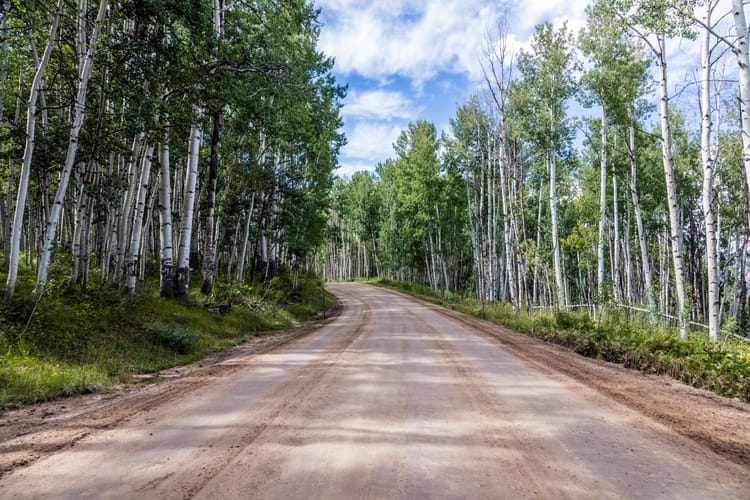

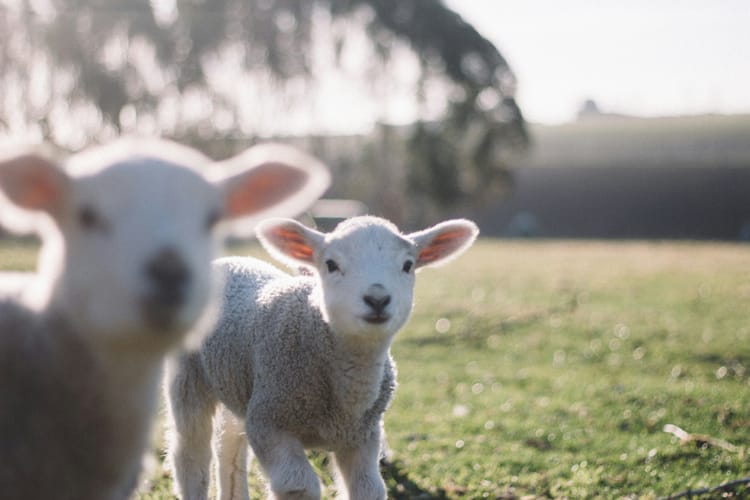
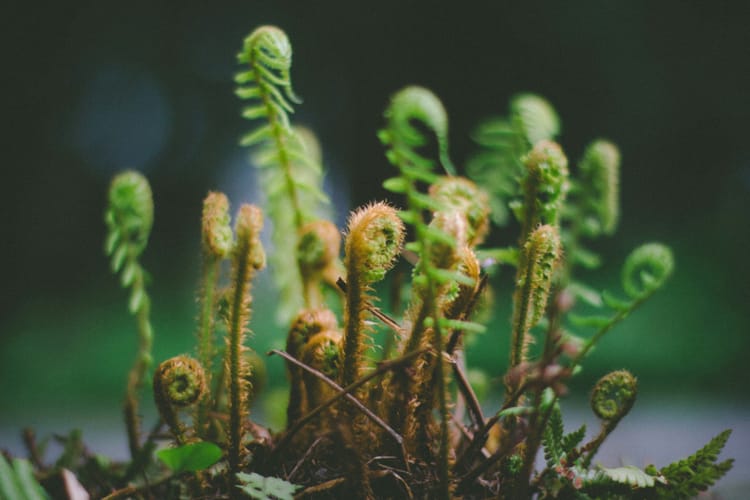
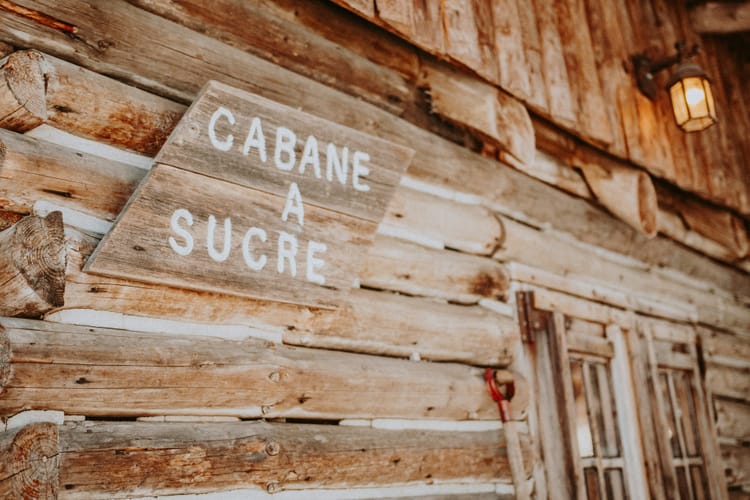
Member discussion